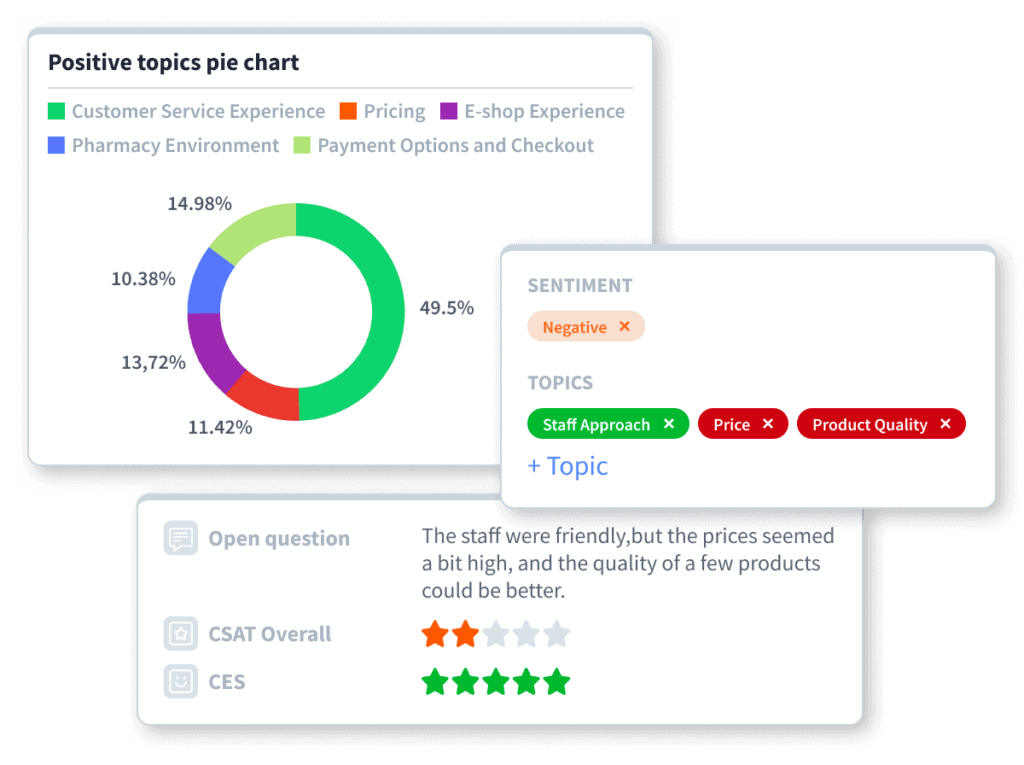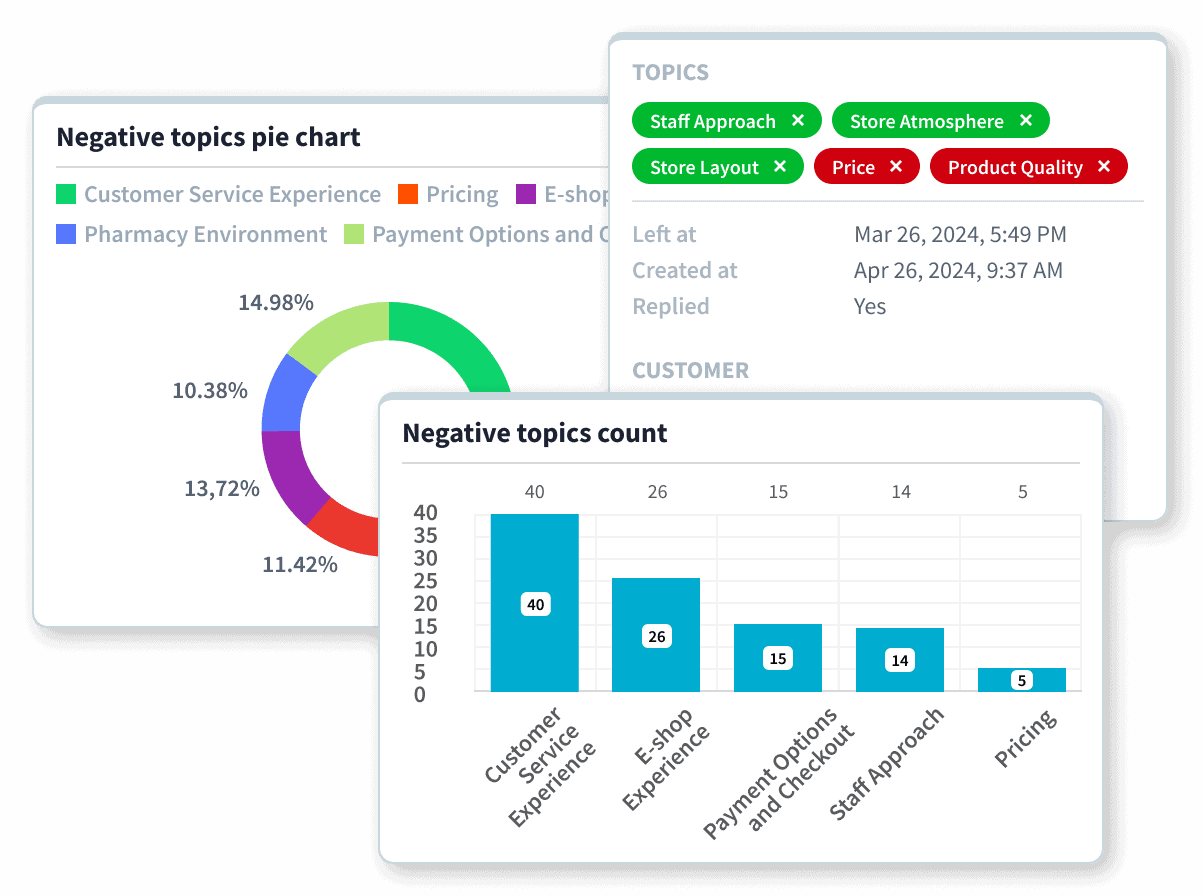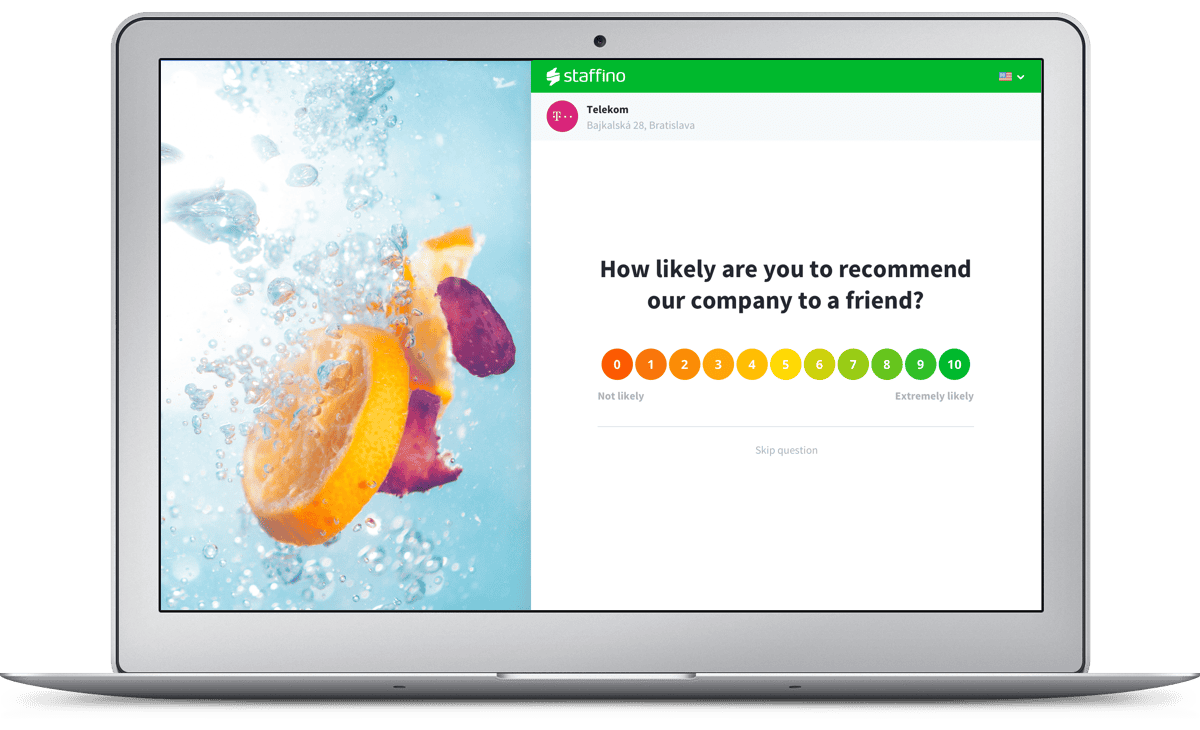Net Sentiment Score (NSS) is a metric that quantifies overall emotion in textual feedback by subtracting negative mention share from positive mention share, normalised to the total mentions (range -100 to +100).
Curious about Net Sentiment Score and how it can elevate your customer insights? In this article, we’ll break down exactly what Net Sentiment Score is, how it’s calculated, how it differs from NPS, and where it fits in the real world—with benchmarks, use cases, and practical strategies you can apply right away. Whether you’re looking to track, analyse, or improve your score, we’ve got you covered. Let’s dive in!
What Is Net Sentiment Score?
Net Sentiment Score Meaning
Net Sentiment Score is the balance of positive and negative public mentions about your brand, presented as a single number. Unlike satisfaction ratings, it reflects emotional tone extracted from unstructured text, making it ideal for social media, reviews, and customer survey comments.

How to Calculate Net Sentiment Score?
How to calculate Net Sentiment Score and which method works best? Let’s explore the two most common approaches and see how they compare.
Net Sentiment Score Formula
The typical net sentiment score calculation is as follows:
((# Positive mentions – # Negative mentions) ÷ Total mentions) × 100
For example, if you have 600 positive mentions and 200 negative out of 1,000 total mentions:
(600 – 200) / 1,000 × 100 = +40
That yields a +40 NSS, meaning net feelings are strongly positive.
In other Net Sentiment Score calculation approaches, each mention is scored from -1 to +1 via NLP. The ratings are averaged to produce an NSS, which is equivalent in result to the percentage-based formula.
What Is Customer Sentiment Analysis, and How Does It Feed NSS?
Customer sentiment analysis is the process of interpreting and classifying customer feedback, whether from surveys, reviews, emails, or social media, to determine the emotional tone behind it. Using techniques from natural language processing (NLP) and machine learning, it categorises feedback as positive, neutral, or negative, enabling organisations to understand how customers feel about their experiences.

In customer experience management, this analysis is crucial because it turns open-ended feedback into structured insights. The results of this sentiment tagging directly feed into the NSS, helping companies track emotional trends over time and take action where it matters most.
Staffino’s AI Topic & Sentiment Analysis
At Staffino, we take sentiment analysis a step further. Our AI Topic & Sentiment Analyser doesn’t just tell you if feedback is positive or negative, it reveals what the sentiment is about.
This means:
- Automatically identifying topics mentioned in feedback (e.g. “staff behaviour,” “pricing,” “delivery times”)
- Classifying the sentiment per topic, so you know exactly what’s being praised or criticised
- Supporting multilingual sentiment detection with accuracy that surpasses generic NLP tools
This allows companies to go beyond high-level metrics and dig into aspect-level insights that drive action. For example, a retailer might have a high overall NSS but still face repeated negative sentiment about delivery times. Staffino makes these patterns immediately visible.

By combining other structured customer experience metrics (NPS, CSAT) with feedback analysis, Staffino enables businesses to measure, monitor, and act on real customer emotions at scale. And since all sentiment-tagged data feeds into the NSS calculation, it provides a precise, up-to-date emotional pulse of your customer base.
What’s the Difference Between Net Sentiment Score and Net Promoter Score?
While both NSS and NPS are key customer experience metrics, they serve different purposes and are derived from different data sources.
NPS: A Direct Loyalty Metric
Net Promoter Score (NPS) measures customer loyalty by asking the question: “How likely are you to recommend our company to a friend or colleague?”

Customers respond on a scale from 0 to 10, and are categorised as Promoters (9–10), Passives (7–8) and Detractors (0–6).
The NPS is then calculated by subtracting the percentage of Detractors from Promoters. It provides a clear indicator of overall loyalty and long-term relationship potential—but it captures only the intent to recommend, not the emotion behind the experience.
NSS: A Real-Time Emotional Barometer
Net Sentiment Score (NSS), on the other hand, is derived from unstructured feedback, such as comments, reviews, or open-ended survey responses. It measures how customers feel about your brand in real time, capturing positive and negative sentiment using AI-powered feedback analysis.
Unlike NPS, which depends on a single survey question, NSS reflects broader customer emotion from any text-based input, including social media mentions, open-ended feedback in CX surveys, public reviews, or customer service transcripts.
Is Net Promoter Score Sentiment Analysis the Same as NSS?
NSS is sometimes mistaken for Net Promoter Score sentiment analysis. However, it is actually a subset of the broader customer sentiment analysis used to calculate NSS. Net Sentiment Score looks at sentiment across all feedback, not just NPS-related.
Net Promoter Score sentiment analysis refers to analysing the open-ended comments that often accompany an NPS rating. For example, after a customer gives a score from 0 to 10, they’re usually asked: “Why did you give that score?”
That free-text response can be analysed using sentiment analysis techniques to determine whether the customer’s underlying sentiment is positive, negative, or neutral, regardless of the numeric NPS score they gave.
This type of analysis doesn’t replace NPS but enriches it. It helps you understand why someone is a Promoter, Passive, or Detractor.
JAN GABAUER
Lead Senior XM Auditor & Consultant
Why You Need Both NPS and NSS
NPS gives you a strategic view of customer loyalty. NSS tells you how your customers emotionally respond to your brand in the moment. Together, they offer a complete picture: NPS tells you the what, NSS tells you the why.
Many customer-oriented brands today use Staffino to collect both metrics—NPS for benchmarking loyalty, and NSS for continuously monitoring customer sentiment across touchpoints.

Boost Customer Experience with NPS, CSAT & CES
Get the most accurate and actionable insights into your customer satisfaction with Staffino's CX metrics. With automated surveys and effective reporting, you can quickly gain valuable insights into your customer journey.
What Is a Good Net Sentiment Score? Benchmarks & Interpretation
When it comes to Net Sentiment Score benchmarks, a score above +40 or +50 is generally viewed as strong in many consumer sectors. Scores around zero flag a balance, while any negative NSS signals more negativity than positivity, a clear sign of reputational risk.
Expect variance across industries: sectors like hospitality may average high sentiment, while controversial industries (e.g., telecom, politics) might see lower benchmarks. Custom benchmarks per industry or brand category help contextualise.
Why Is Measuring Net Sentiment Score Important?
An increasing number of companies across industries are turning to Net Sentiment Score as a core CX metric for monitoring brand health, customer loyalty, and reputational risk. It allows organisations to capture shifts in perception as they happen, react quickly to emerging issues, and measure the emotional impact of their products, services, and communication efforts.
Here’s why NSS is quickly becoming a must-have in present-day customer experience and brand management strategies:
1. Early Warning System for Reputation Issues
A downward trend in NSS can flag brewing crises far faster than traditional surveys. For example, an analysis of U.S. bank stock performance revealed that social media sentiment significantly affects stock returns, with negative comments exerting a stronger impact than positive ones, and this effect is evident within hours.
2. Monitor Brand Health over Time
NSS serves as a holistic measure of emotional engagement, blending across platforms. Regular tracking—daily or weekly—lets you measure the impact of product launches, campaigns, or crises.
3. Correlate Sentiment with Business Outcomes
Emerging studies show strong links between positive sentiment and metrics like brand loyalty, customer satisfaction, and even sales growth.
How to Improve Your Net Sentiment Score in 4 Steps
Improving Net Sentiment Score isn’t just about silencing negative feedback. It’s about creating more positive emotional moments across the customer journey. Whether you’re dealing with product complaints, service issues, or just aiming to boost loyalty, there are clear, actionable ways to shift sentiment in your favour. Here’s how to make every mention count:
1. Respond and Close the Loop
Engage with negative feedback publicly and promptly to close the feedback loop.

CX platforms like Staffino offer a closed-loop feedback system that enables you to acknowledge issues, resolve them, and demonstrate empathy in real time. This not only reduces negativity but also shows customers that you are actively listening.

Get Actionable Insights with Closed Loop Feedback Management
With Staffino, you'll never leave a customer unhappy again! Streamline the process of collecting and responding to feedback, identify areas of improvement, and make sure that customer issues are addressed quickly and effectively.
2. Encourage Positive Engagement
Motivate happy customers to leave reviews or social praise. Positive mentions directly enhance NSS and act as promoter-style social proof.

Staffino’s Public Reviews Connector not only allows you to analyse customer reviews from multiple platforms, but also works in reverse, encouraging satisfied customers to leave positive reviews on Google or other public platforms of your choice. See how we helped Cofidis boost its Google star rating in our detailed case study.
3. Analyse Sentiment Drivers
Use AI-powered aspect-level sentiment analysis to identify recurring pain points, such as “shipping delays” or “staff attitude”, and address them at scale, not just reactively.
A cinema chain Sterio used Staffino’s AI analysis to uncover that while “online reservations” had negative feedback, the real customer priority was “personnel and service,” which had the highest volume of mentions.
This insight helped them prioritise improvements, revamp staff rewards, and justify investment in upgrades. By focusing on the topics that matter most emotionally and frequently, you turn sentiment into clear action.
4. Monitor Trends and Compare Benchmarks
Track NSS over time and benchmark weekly vs. longer-term averages. Identify sudden downward deviations and investigate their root causes promptly.
Start Tracking Your Net Sentiment Score Today with Staffino!
Whether you’re tracking emotional trends, identifying emerging risks, or fine-tuning the customer experience, Net Sentiment Score offers a powerful, emotion-driven layer of insight that traditional metrics like NPS or CSAT can’t fully capture on their own.
Our CX platform not only measures and calculates your Net Sentiment Score with high precision, but also shows what the sentiment is about—whether it’s pricing, employee behaviour, delivery delays, or any other issue. And thanks to real-time feedback management, you can act on sentiment insights instead of just watching them unfold.
Ready to take control of your brand’s emotional pulse? Request a demo with Staffino below and see how we can help you measure, understand, and improve Net Sentiment Score today.

Get a First-Hand Experience Today!
Staffino is the perfect tool for creating engaging surveys, tracking performance, responding to customer feedback, and rewarding top employees. Get started today with our FREE demo!
FAQ
A single numeric reflection of tone, balancing positive and negative mentions about a brand, topic, or product.
The Net Sentiment Score is calculated as the difference between positive and negative sentiment (mentions), adjusted by the total volume of feedback. The result is a number between –100 and +100, where higher values indicate more positive overall sentiment.
Typically, this formula is used to calculate the Net Sentiment Score:
(# of positive mentions − # of negative mentions) ÷ total mentions × 100
Generally, +40 to +50+ is considered strong; zero is ambivalent; any negative value suggests more negativity than positivity (risk zone).
Because it quantifies emotion in public feedback, offers real-time reputation alerting, and links directly to business outcomes like loyalty and financial value.
The NLP-powered process for classifying text as positive, negative, or neutral, sometimes at the emotion-aspect level, using techniques like lexicon-based models, machine learning, or deep transformers.
By responding to customer sentiment in real time, encouraging positive customer feedback, analysing topic-level sentiment drivers, monitoring trends, and refining your NLP accuracy.









